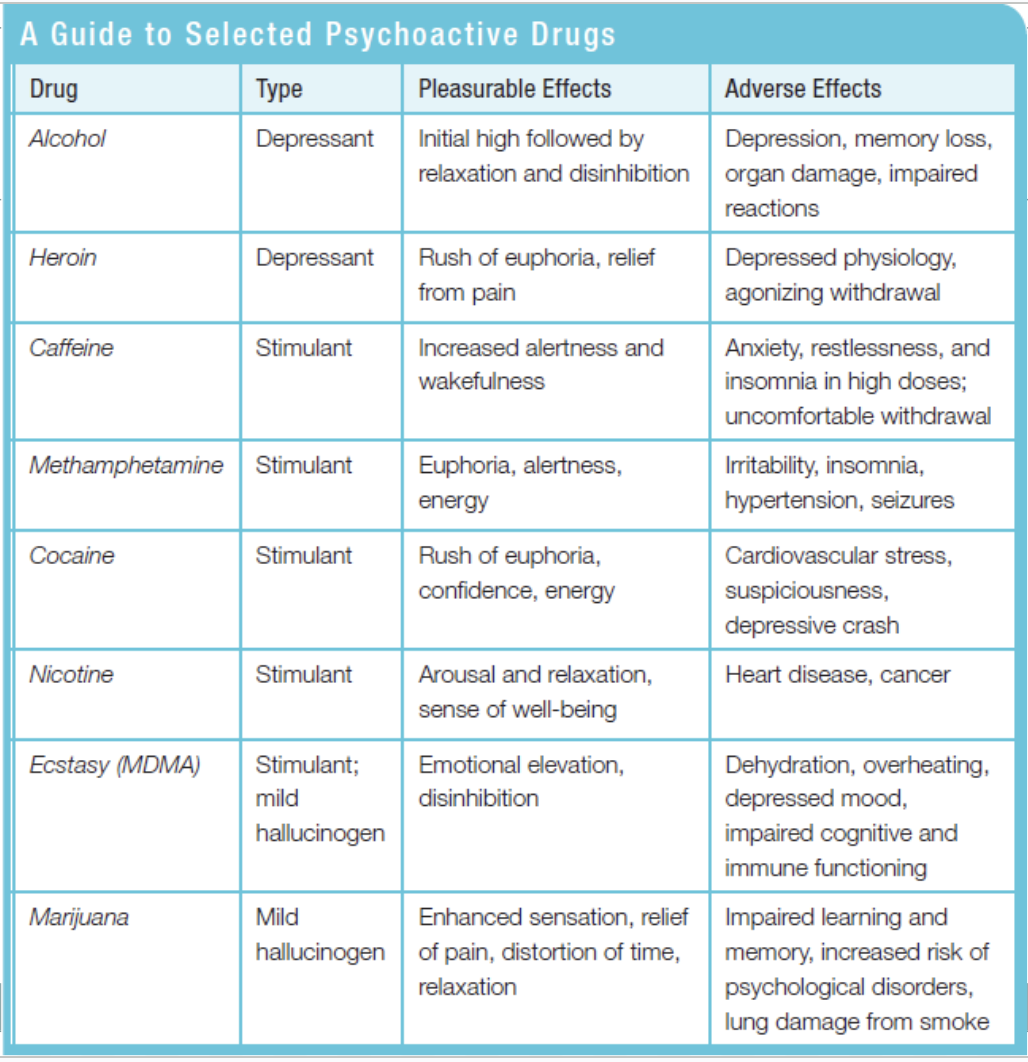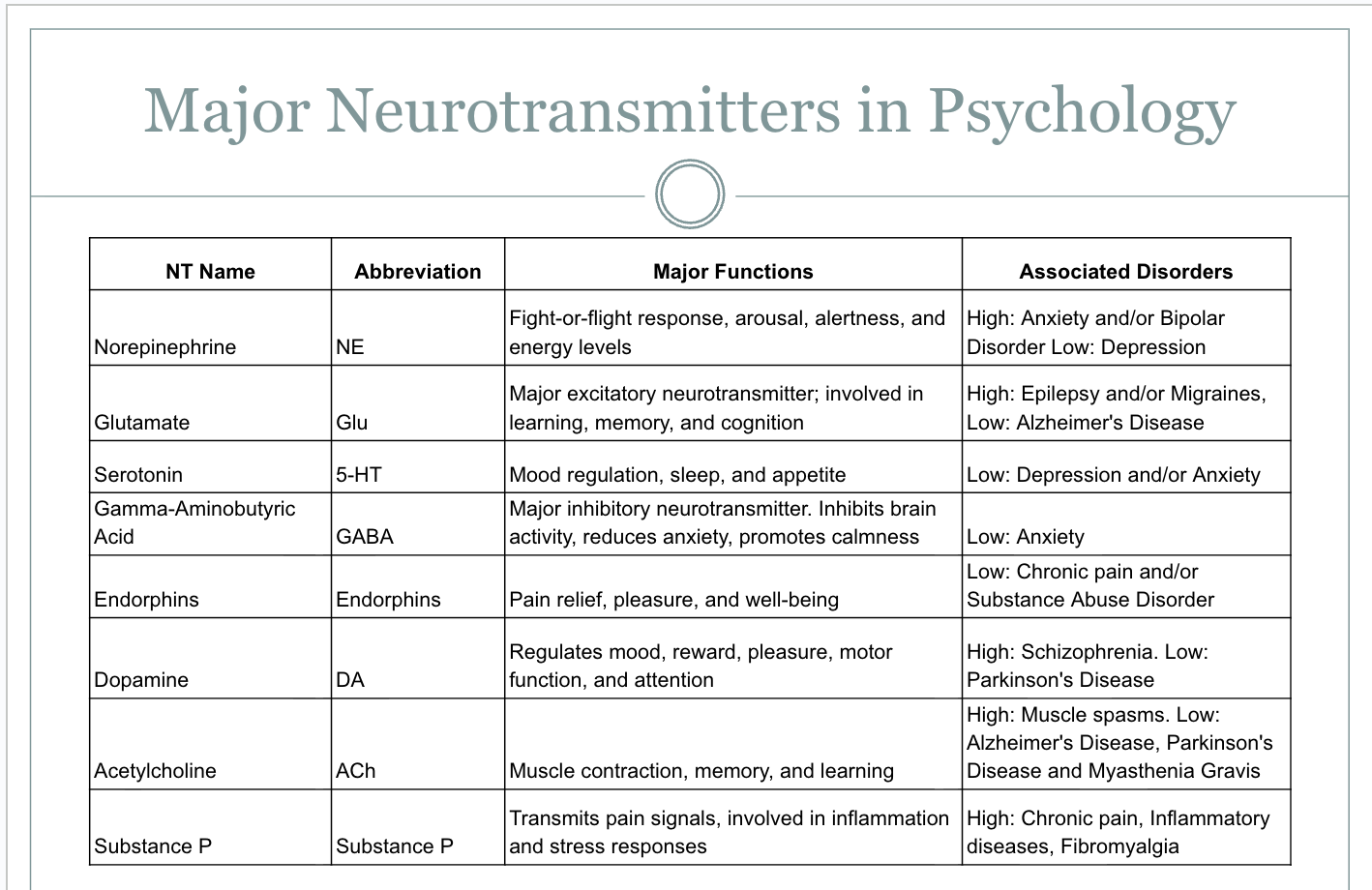Unit 1 Ap Psychology
1/99
There's no tags or description
Looks like no tags are added yet.
Name | Mastery | Learn | Test | Matching | Spaced |
|---|
No study sessions yet.
100 Terms
Psychology
The science of mental and behavioral processes.
Epigenetic
How the environment affects your gene expression(on/off).
Interaction
How different factors effect an outcome.
Fraternal (Dizygotic) Twins
Twins from separate fertilized eggs *DO NOT HAVE IDENTICAL DNA.
Identical (Monozygotic) Twins
Twins from the same egg that split *HAVE IDENTICAL DNA.
Environment
The non-genetic influences on our psychology.
Hereditary
The transfering of characteristics and genes from parents to offspring.
Genes
The traits parents pass down.
Genome
The complete set of genes in an organism.
Mutation
Errors in gene replication that leads to a change in the organism.
Natural Selection
Survival of the fittest-only the good traits get passed on.
Evolutionary Psychology
How evolution affects our psychology as a species.
Behavior Genetics
How our genes and environment affect our psychology on a personal level.
Nature-Nurture Issue
Is our psychology because of our biology or because of how we were raised?
Family Studies
Analyze traits that might be shared biologically in families.
Twin/Adoption Studies
Analyzes traits that might be because of shared genes and/or environments.
Reflexes
Automatic responses to stimuli.
Nervous System
The body’s electrochemical communication network(all the nerves in the peripheral and central nervous system)-takes in/sends information, makes decisions.
Central Nervous System(CNS)
The brain and spinal cord-makes decisions.
Peripheral Nervous System(PNS)
Sensory and motor neurons that connect CNS to the rest of the body.
Nerves
Bundled axons connecting the CNS to muscles, glands, and sensory organs.
Sensory(Afferent)Neurons
Carries incoming information from the body’s tissues and sensory receptors to the brain and spinal cord.
Motor(Efferent)Neurons
Neurons that carry information out of the brain into the body.
Interneurons
Neurons in the brain/spinal cord-they communicate internally and process the info coming from the sensory inputs and outputs.
Somatic/Skeletal Nervous System
The PNS system that controls the skeletal muscles.
Autonomic Nervous System(ANS)
Controls the glands and muscles of internal organs; sympathetic division arouses, parasympathetic calms.
Sympathetic Nervous System
The part of the ANS that stimulates and uses energy to move the body.-Fight or Flight
Parasympathetic Nervous System
The part of the ANS that cals the body and preserves its energy.
Why is the spine a part of the CNS?
It acts as a two way street for information inputs and outputs/reactions with neutral fibers.
Neuron
A nerve cell-building blocks of the nervous system.
Cell Body
The part of the neuron that has it’s nucleus.
Dendrites
The little “hairs” receiving messages.
Axon
Connects a neuron to other neurons, muscles, or glands, and passes messages.
Myelin Sheath
Covers the axon and helps speeds up messages.
Glial Cells(Glia)
Nourishes, supports, and protects neurons; also play a role in thinking, learning, and memory.
Action Potential
Impulses.
Threshold
How much of a trigger is needed to set off an impulse.
All-Or-None-Responses
If stimulation becomes too high, the neuron either completely fires or not at all.
Refractory Period
A break for a neuron after it fires off-needs to regenerate axon first.
Synapse
A small gap where electrical signals are being sent from the neuron.
Neurotransmitters
Chemical messengers that go between neurons-binds to the receptors of the other neuron and makes the decision to act or not.
Reputake
Excess neurons being disposed of(either absorbed or broken down).
Endorphins
Natural-pain control and pleasure.
Agonist
A molecule that increases the neurotransmitter’s action.
Antagonist
A molecule that blocks a neurotransmitter’s action
Endocrine System
A set of glands and fats that secrete hormones into the bloodstream.
Hormones
Chemical messengers created by the endocrine glands that affect other tissues.
Endocrine System in a Nutshell
Hypothalamus→Pituitary Gland→Other Glands→Hormones
Hallucinogens
Psychedelic drugs that affect perception.
Near-Death-Experience
A state of consciousness near death.
Stimulants
Drugs that excite neural activity and speeds up bodily functions. Ex: Caffeine(An antagonist of adenosine receptors, and nicotine, Agonist for nicotinic acetylcholine receptors")
What are some examples of stimulants?
Nicotine, Caffeine, Cocaine, Molly
Barbiturates(Tranquilizers)
Depressants that lower CNS activity. They bring down anxiety, but also judgement and memory-AFFECTS GABA.
Opioid
Opium and Co. Depresses neural activity, lessens pain and anxiety.(Fentanyl, Oxycotin, Morphine-too much makes the brain stop producing its own opium)
Tolerance
How much of a substance your body needs to feel the effects.
Addiction
A dependency on a substance to feel normal.
Withdrawal
Feeling uncomfortable without a substance.
Depressants
Drugs that lessen neural activity and body functions.
Psychoactive Drugs
Chemicals that alter the brain, leading to changes in perceptions and moods
What are the 3 of psychoactive drugs?
Depressant, Stimulant, Hallucinogen.
What are some examples of depressants?
Alcohol.
What are some examples of hallucinogens?
LSD, Marijuana.
Seretonin
Sleep regulation, Emotional stability/mood regulation, Appetite control, Nausea reduction, Energy-Too little=Sleep problems and depression.
Dopamine
Movement, Motivation, Drive, Energy. Too little=Depression, Mood Issues.
Norepinephrine
Fight for Flight, Energy levels, Alertness-too much=anxiety, too little=depression
Acetylcholine
Muscle movements and contractions, memory/learning, Emotions and
GABA
Inhibits brain activity,reduced anxiety, makes you calm-low=anxiety.
Endorphins
Pain relief, pleasure, well-being(exersize)-too little=substance abuse and chronic pain.
Glutamate
Learning, memory, cognition-too much=epilepsy/ migraines, too little=alzheimer’s.
Substance P
Pain receptors.
Types of Drugs+Effects

Steps of Firing a Neuron
Chemical is resting at -70 Mv-Stimulus happens, Mv is -55-depolarization until 40 Mv(N is in, then action potential, then repolarization(K out)-Hyperpolarization, Refractory period, repeat.
Breakdown of Major NTmitters

Nodes of Ranvier
Gaps in the Meylin Sheath.
Terminal branch
Tunnels at the end of the axon.
Terminal Button/Synaptic Knob
Structure at the end of an axon terminal branch.
Synaptic vesicles
Sacs that hold the chemicals then burst.
Synaptic Space/Cleft
The tiny gap between the axon terminal of one neuron and the dendrites of the next neuron.